Balatro review - jokers to the right
Platform reviewed: PC
Available on: PS5, PS4, Xbox Series X|S, Xbox One, Nintendo Switch, PC
Release date: February 20, 2024
Balatro does for poker what Shotgun King did for chess: turn a relatively straightforward and iconic game into something more outlandish and - arguably - something even more fun.
A deckbuilding roguelite at heart, those unfamiliar with the rules of poker will be relieved to hear that Balatro only really loosely bases itself around the popular card game. You’ll play hands like three-of-a-kind and straight flush, but this is just the skeleton of what Balatro offers.
The meat of it, then, is how you’re encouraged to build and improve your deck through a variety of means. A baseline knowledge of poker actually won’t get you very far in Balatro; it’s playing its own game, with its own unique set of rules; this is what truly sets it apart from other deckbuilders on the market.
I'm the Joker, baby
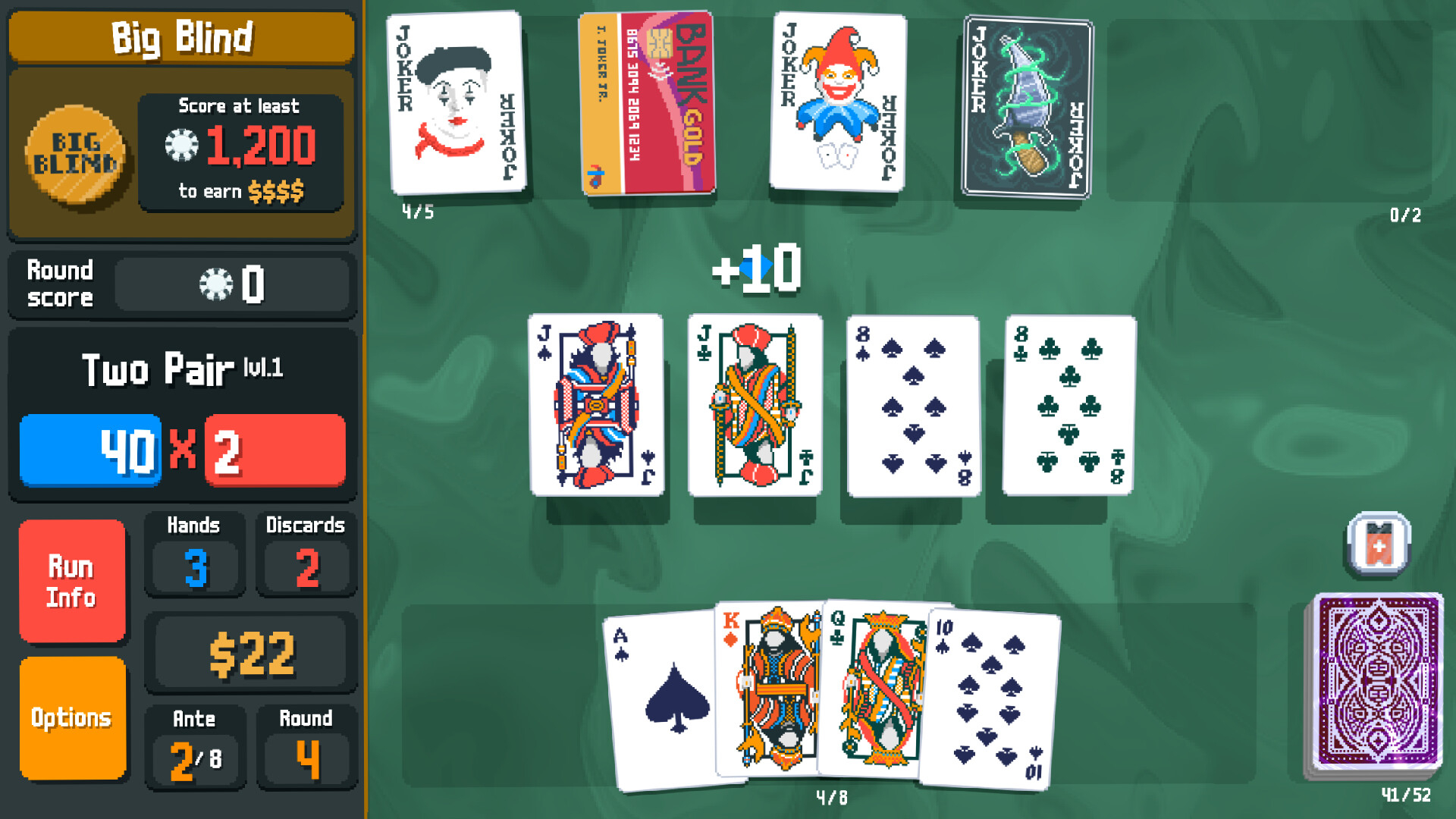
If you’re unfamiliar with Balatro, then I’ll briefly get you up to speed. Starting with a standard 52-card deck, you’ll be dealt cards with which you must play a scoring poker hand. This could be a simple pair, a flush (five cards of the same suit), or a straight (five cards that rank up in sequence). Doing so scales the amount of chips you’ll earn, as well as a multiplier (referred to in-game as ‘mult’). The formula - chips multiplied by mult - is your score for that hand. You have a limited number of hands per round, and you must cross the score threshold to move up to the next.
The real magic of Balatro is how you go about ensuring a high score each round. These come in the form of Jokers; think of these as passive abilities that form the core of your build. Jokers come in many forms; some can be as simple as increasing your score when certain hands, suits, or individual cards are played.
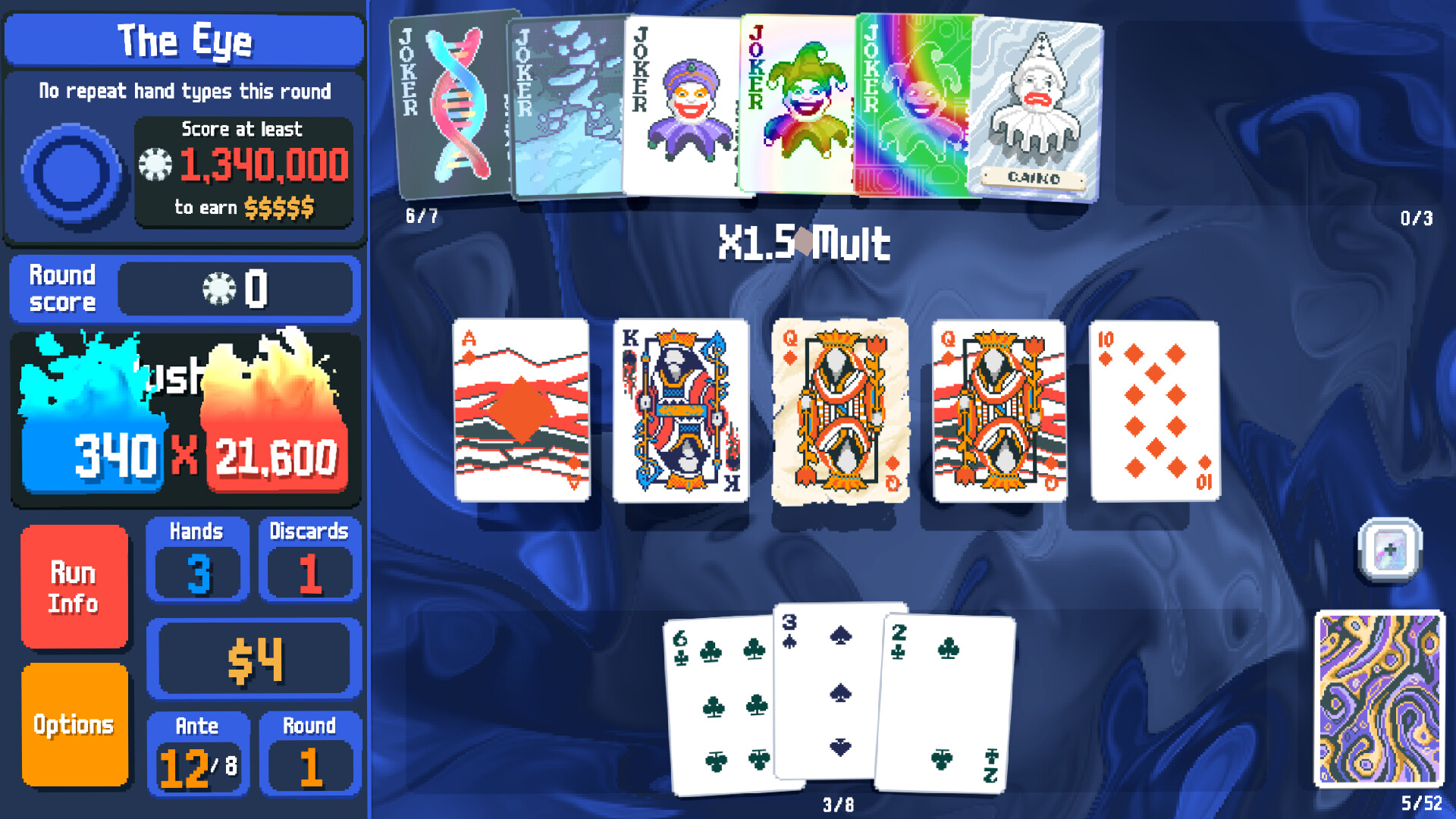
Balatro has a very simple but effective way of letting you know your deck is killing it. When the score multiplier on the left of the screen starts flaming, that’s its way of telling you that you’ve managed to build an excellent deck.
Others are decidedly more complex. For example, one Joker boosts score if a numbered card from the Fibonacci sequence (that’s Ace, 2, 3, 5 or 8) is a part of your hand. Another permanently boosts your mult based on the number of booster packs you’ve opened and promptly skipped over.
Said booster packs are the other major contributor to success in a Balatro run. Alongside Jokers, they can be purchased in the shop you’ll visit between each round, and provide a random assortment of cards. These include Planet cards, which permanently boost the level of a type of hand (thus increasing its score and multiplier), and Tarot cards, which can apply modifiers to existing cards in your deck, such as changing their suit or offering buffs like additional mult or cash earned when played.
One of a kind
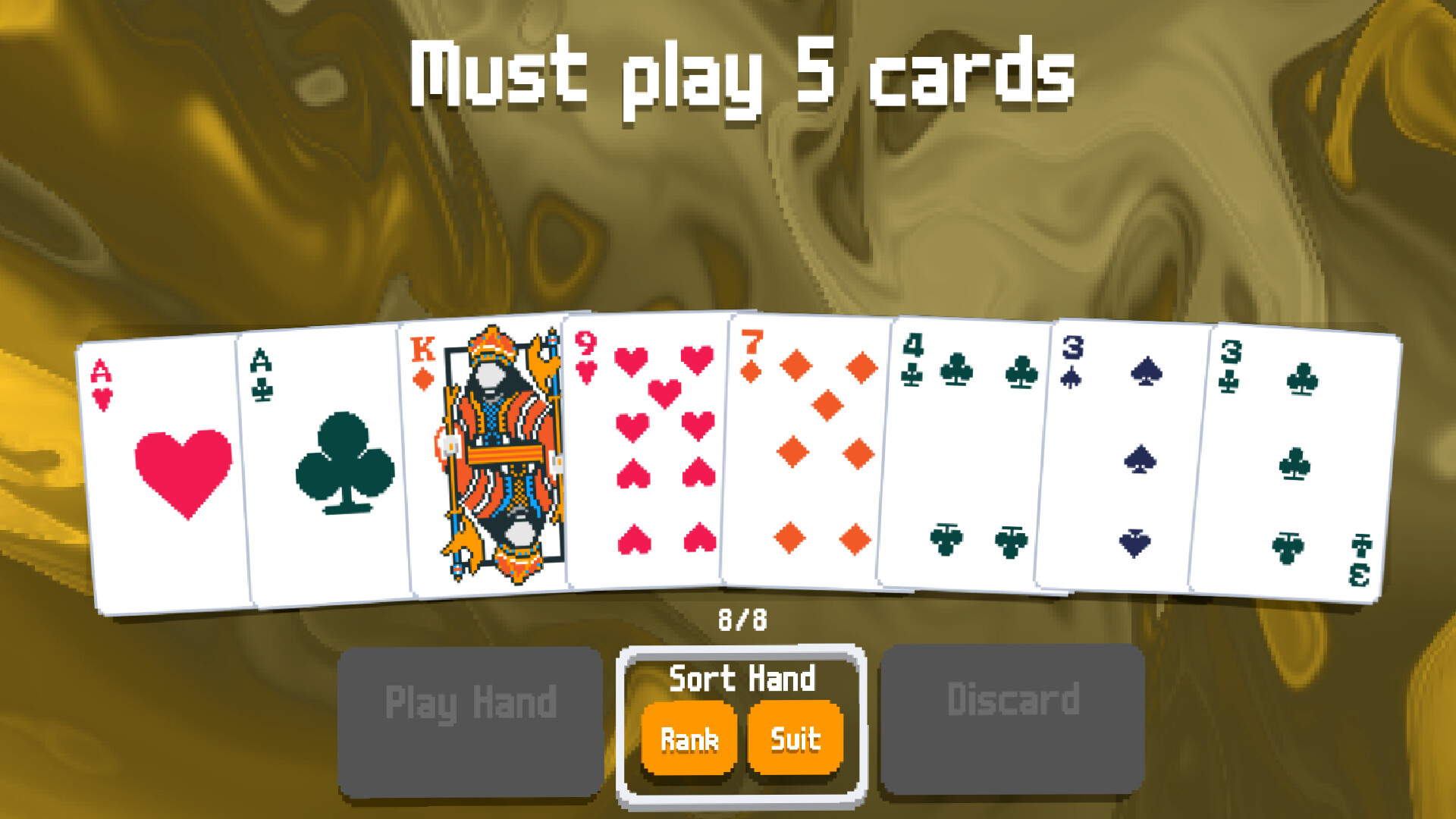
Balatro offers you so many tools to create unique decks, then. And typically, I’ve found the best method of success is purchasing whichever Jokers show up early for added survivability, and then aiming to further bolster the deck around what those perks offer. As an example, I came across a Joker that condensed Hearts and Diamonds, and Spades and Clubs, into two suits. This effectively doubled my chances of scoring flushes, and thus, I built a deck to practically guarantee I could create that hand on every turn.
This also means that subsequent Balatro runs can feel decidedly different from the last. And eventually, you’ll get a decent grasp on how to create a run-winning deck consistently. Thankfully, winning with a deck unlocks higher difficulties, allowing you to turn up the challenge and start unlocking some of the more sought-after deck types, Jokers, and more.
Conversely, as is the nature of roguelites, Balatro does feature a degree of randomness - further exacerbated by the fact you’re working with a 52-card deck. Sometimes, runs just won’t go your way. Especially in the early game, this can be frustrating, as you’re still figuring out the long-term plan for your deck and set of Jokers.
Furthermore, each level of Balatro (known as an Ante) ends with a boss encounter. These are naturally much harder, applying debuffs to your deck for that round only. Such debuffs can sometimes be particularly punishing, effectively hard-countering your build. One boss permanently de-ranks any hand type you play, while another draws your cards face-down. I think it’s awesome that bosses can be so scary in Balatro, but if you’re particularly unlucky, they can bring an abrupt end to a solid run should the criteria align against you.
Under the spell
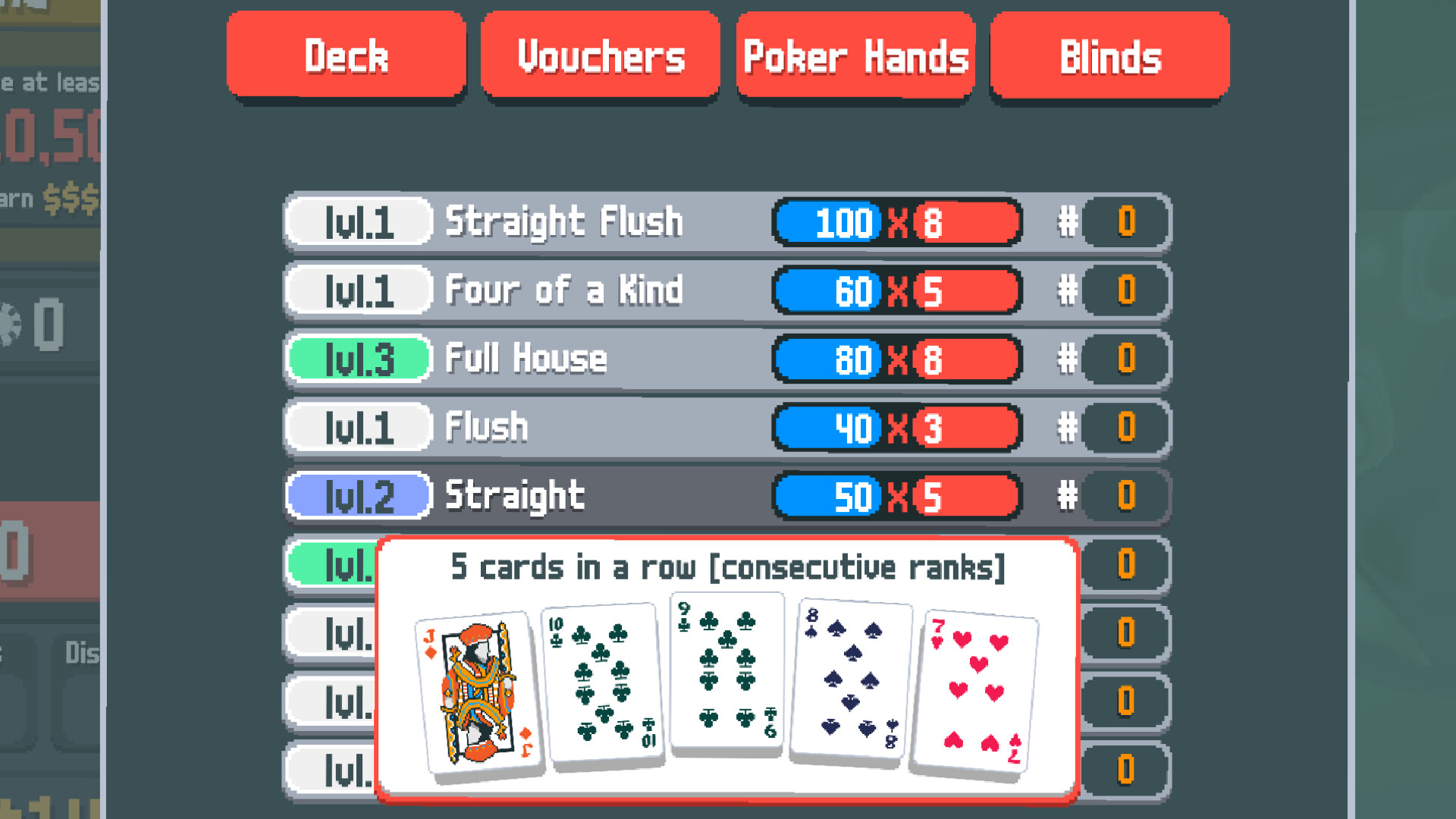
Balatro’s user interface is honestly sublime, combining a slick-yet-simple aesthetic with crystal-clear readability. All the information you need is presented right on the main screen of play. Meanwhile, additional details on your cards and Jokers are visible just by hovering over them. There’s very little in the way of vagaries here. All ancillary info about your current run, as well as a handy guide on how to create certain hands, are available to view in a separate ‘Run Info’ menu, too.
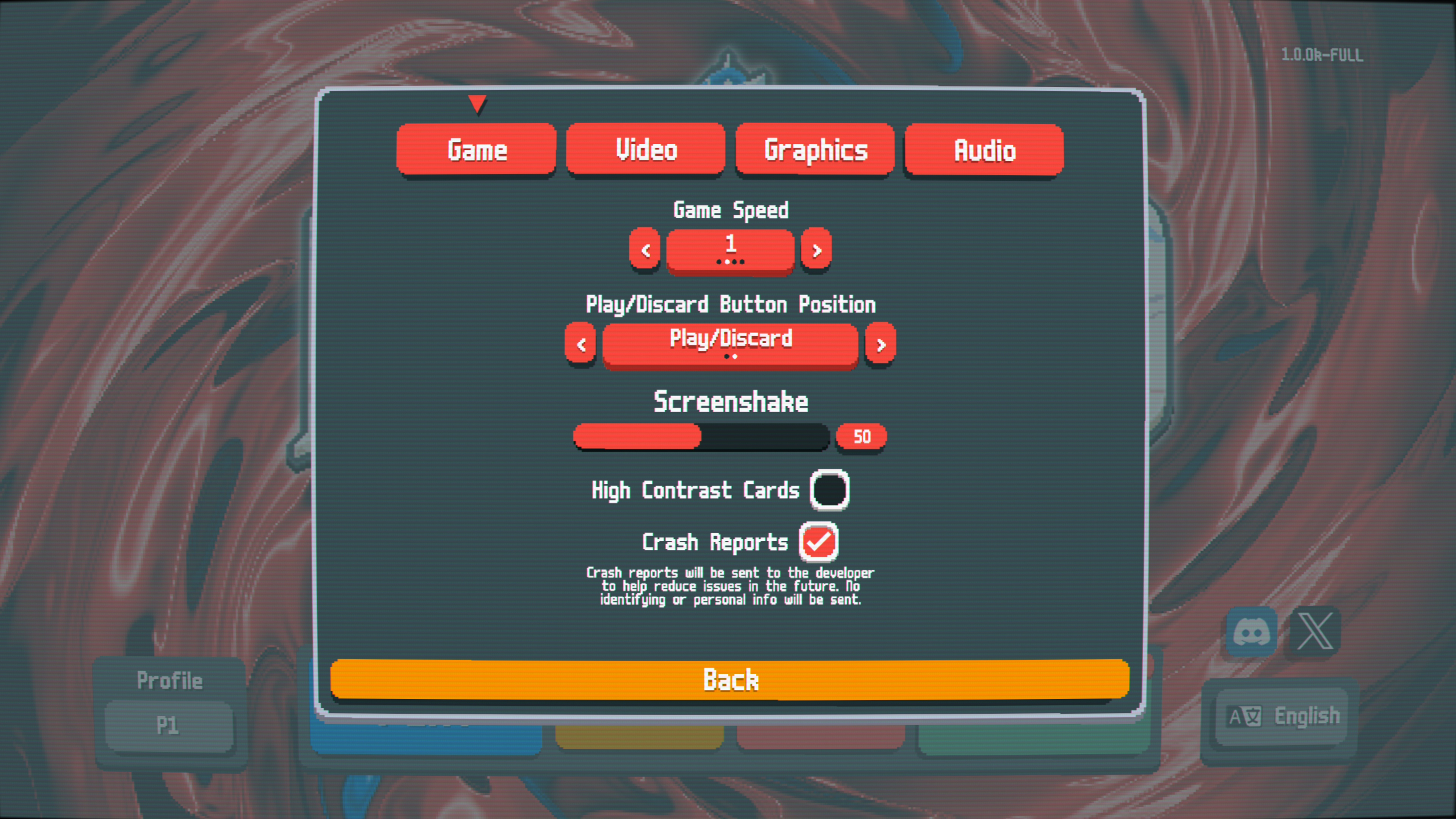
Balatro offers a decent amount of accessibility options. High-contrast cards can improve readability, and effects such as screenshake and the CRT filter can be switched off if you prefer a cleaner picture.
This readability also plays into the satisfaction of scoring a big hand. When you play your hand, you’ll get a clear breakdown of how each card and Joker tallies up your score, with each sequentially applying score and mult based on your build. Delightful, audible pings accompany this, shifting higher in pitch as your score skyrockets. This approach to sound design is borderline hypnotic, pairing seamlessly with play to help make Balatro an utterly moreish experience.
Overall, then, Balatro hardly puts a foot wrong. The game offers a remarkably deep roguelite experience. There’s not a single mechanic that feels out of place; everything works in tandem to allow you to build exceptional decks time and again. And sure, that degree of randomness can frustrate and bring runs to a premature end. But as individual runs are on the shorter side (typically around 20-30 minutes), it’s easy to pick yourself up and try again with a whole new approach. Whether you’re into the roguelite subgenre or not, Balatro is an absolutely essential play.
Check out more top titles by visiting our guides to the best Steam games and the best RPGs you can play right now.
0 comments:
Post a Comment